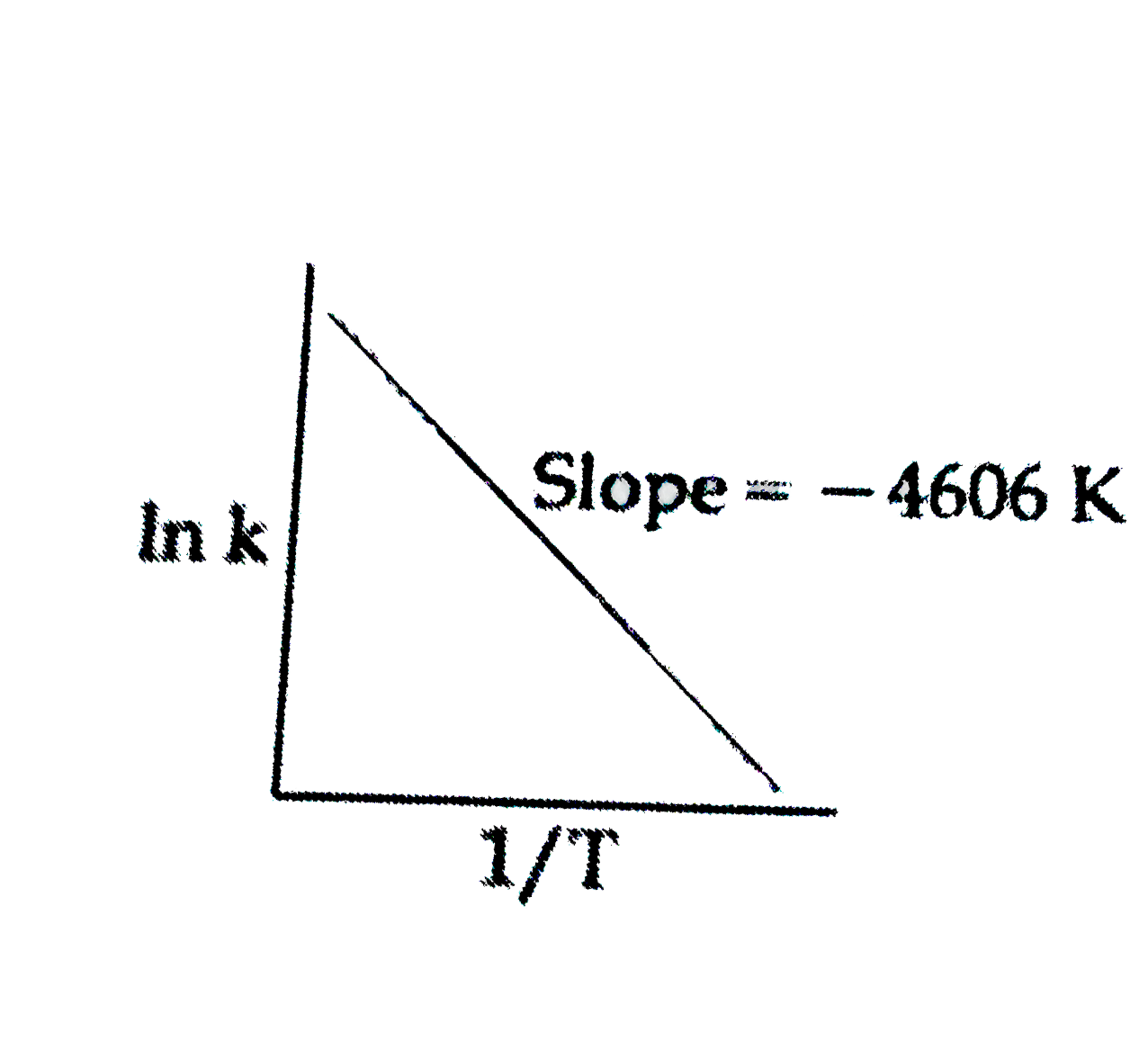The rate constant of a reaction at and are , respectively. Calculate the values of and at .
To solve the problem, we will use the Arrhenius equation and the relationship between the rate constants at two different temperatures. The steps are as follows:
Step 1: Write the Arrhenius equation
The Arrhenius equation relates the rate constant k to the activation energy Ea and the temperature T:
k=Ae−EaRT
where:
- k = rate constant
- A = Arrhenius constant (pre-exponential factor)
- Ea = activation energy
- R = universal gas constant (8.314 J/(mol·K))
- T = temperature in Kelvin
Step 2: Use the two temperature values to set up the equation
We have two rate constants at different temperatures:
- k1=0.02s−1 at T1=500K
- k2=0.07s−1 at T2=700K
Using the relationship:
ln(k2k1)=−EaR(1T1−1T2)
Step 3: Substitute the values into the equation
Substituting the known values:
ln(0.070.02)=−Ea8.314(1500−1700)
Step 4: Calculate the left-hand side
Calculate ln(0.070.02):
ln(0.070.02)=ln(3.5)≈1.252
Step 5: Calculate the right-hand side
Calculate (1500−1700):
1500−1700=7−53500=23500=11750
Step 6: Substitute back into the equation
Now we substitute back into the equation:
1.252=−Ea8.314⋅11750
Step 7: Solve for Ea
Rearranging gives:
Ea=−1.252×8.314×1750
Calculating this:
Ea≈18227J≈18.227kJ
Step 8: Calculate the Arrhenius constant A
Using the Arrhenius equation at T1=500K:
k1=Ae−EaRT1
Taking the natural logarithm:
ln(k1)=ln(A)−EaRT1
Substituting k1=0.02:
ln(0.02)=ln(A)−182278.314×500
Calculating ln(0.02):
ln(0.02)≈−3.912
Now substituting:
−3.912=ln(A)−182274157
Calculating 182274157:
182274157≈4.38
Thus:
−3.912=ln(A)−4.38
Rearranging gives:
ln(A)=−3.912+4.38≈0.468
Calculating A:
A=e0.468≈1.59
Final Results
- Activation Energy Ea≈18.227kJ
- Arrhenius Constant A≈1.59
The Arrhenius equation relates the rate constant k to the activation energy Ea and the temperature T:
k=Ae−EaRT
where:
- k = rate constant
- A = Arrhenius constant (pre-exponential factor)
- Ea = activation energy
- R = universal gas constant (8.314 J/(mol·K))
- T = temperature in Kelvin
We have two rate constants at different temperatures:
- k1=0.02s−1 at T1=500K
- k2=0.07s−1 at T2=700K
ln(k2k1)=−EaR(1T1−1T2)
Substituting the known values:
ln(0.070.02)=−Ea8.314(1500−1700)
Calculate ln(0.070.02):
ln(0.070.02)=ln(3.5)≈1.252
Calculate (1500−1700):
1500−1700=7−53500=23500=11750
Now we substitute back into the equation:
1.252=−Ea8.314⋅11750
Rearranging gives:
Ea=−1.252×8.314×1750
Calculating this:
Ea≈18227J≈18.227kJ
Using the Arrhenius equation at T1=500K:
k1=Ae−EaRT1
Taking the natural logarithm:
ln(k1)=ln(A)−EaRT1
Substituting k1=0.02:
ln(0.02)=ln(A)−182278.314×500
Calculating ln(0.02):
ln(0.02)≈−3.912
Now substituting:
−3.912=ln(A)−182274157
Calculating 182274157:
182274157≈4.38
Thus:
−3.912=ln(A)−4.38
Rearranging gives:
ln(A)=−3.912+4.38≈0.468
Calculating A:
A=e0.468≈1.59
- Activation Energy Ea≈18.227kJ
- Arrhenius Constant A≈1.59
Topper's Solved these Questions
- CHEMICAL KINETICSBOOK - NCERT ENGLISHCHAPTER - CHEMICAL KINETICSEXERCISE - Exercise
1 Videos
- CHEMICAL KINETICSBOOK - NCERT ENGLISHCHAPTER - CHEMICAL KINETICSEXERCISE - SOLVED EXAMPLE
1 Videos
- BIOMOLECULESBOOK - NCERT ENGLISHCHAPTER - BIOMOLECULESEXERCISE - Exercise
33 Videos
- CHEMISTRY IN EVERYDAY LIFEBOOK - NCERT ENGLISHCHAPTER - CHEMISTRY IN EVERYDAY LIFEEXERCISE - Exercise
32 Videos
Similar Questions
The rate constants of a reaction at 500 K and 700 K are 0.02s−1 and 0.07s−1 respectively. Calculate the values of Ea and A.
View SolutionThe rate constants of a reaction at 500 K and 700 K are 0.02s−1 and 0.07s−1 respectively. Calculate the values of Ea and A.
View SolutionThe rate constants of a reaction at 500 K and 700 K are 0.02s−1 and 0.07s−1 respectively. Calculate the values of Ea and A.
View SolutionThe equilibrium constants for the reaction Br2⇔2Br
at 500 K and 700 K are 1×10−10 and 1×10−5 respectively. The reaction is:
View SolutionThe equilibrium constants for the reaction Br2⇔2Br
at 500 K and 700 K are 1×10−10 and 1×10−5 respectively. The reaction is:
View SolutionThe rate constant of a reaction is k=3.28 ×10−4s−1. Find the order of the reaction.
View SolutionThe equilibrium constant for the reaction
H2(g)+S(s)⇔H2S(g)
is 18.5 at 925K and 9.25 at 1000K, respectively. Calculate the enthalpy of the reaction.
View SolutionThe rate constant of a reaction is 3.2×10–4 at 280 K, what will be its value at 300 K approximately?
View SolutionThe efficiency of a Carnot engine working between 800 K and 500 K is -
View SolutionFor a reaction, consider the plot of In K versus 1/T given in the figure. If the rate constant of this reaction at 400 K is 10−5s−1, then the rate constant at 500K is :

View Solution
